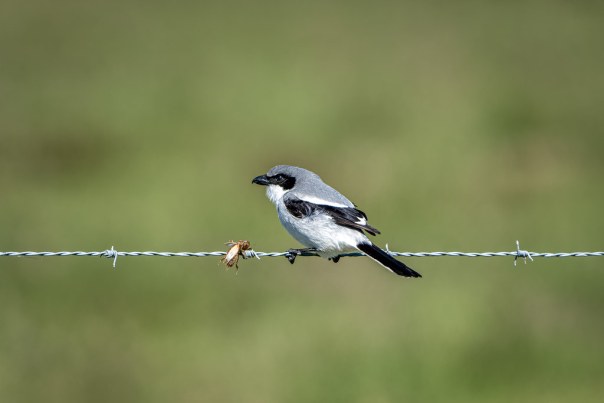sur·prise:
noun: an unexpected or astonishing event, fact, or thing
verb: cause (someone) to feel mild astonishment or shock
synonyms: astonishment, amazement, incredulity, wonder
One reason I like photography is because it often pleasantly surprises me. If you do a search on this blog (https://edrosack.com/?s=surprise). you’ll find I’ve used the word many times. Today I have a couple more examples, so lets discuss photo surprises again.
The title of this one gives away the surprise. Of course, it’s not unusual for fish to jump out of the water. I was set up for landscape photography, not wildlife or action and I didn’t notice the fish that morning so I hadn’t tried to time my shutter to include it. When I started processing the photo on my computer I was amazed that my camera recorded the fish (a mullet?) mid jump. I think it adds interest to the photo. A small wonder, but a good one. Here’s a closer look.
 Mid-jump Mullet
Mid-jump Mullet
This second image is a different kind of surprise.
 First Light on Wetland Wildflowers
First Light on Wetland Wildflowers
I was on Black Point Wildlife Drive and saw that beautiful light on the clouds. When I got out of the car to make a photo, I noticed those nearby wildflowers and wanted to include them – it was a difficult task. The exposure for the flowers would be very different from the sky. And getting everything in focus in one frame would also be hard. I decided to make three vertical frames (adjusting focus and exposure in each one) and then try blending them together into a single panorama image when I got home.
I wasn’t hopeful. On top of capture issues, I knew the blending would be hard too. The flowers were very close and would change perspective against the open marsh when the camera moved. And any motion from wind would cause ghosting or other issues. I made the frames anyway – it was worth a try. I didn’t think it would turn out this well – an unexpected success!
You can click on the first and last photos to view larger versions on Flickr.
Changing the subject, Tropical Storm Isaias is heading toward Central Florida. Our skies are blue and cloud free right now. Later today it’s expected to be a lot closer and we might get some strong weather beginning this afternoon. Lynn and I have done our hurricane prep and are hoping it stays out to sea and doesn’t get too bad. We also hope all of you anywhere near the projected path are prepared too.
Thanks for stopping by and reading my blog. Hang in there and take care of each other. And if you can – make some surprising photos!
©2020, Ed Rosack. All rights reserved
















































